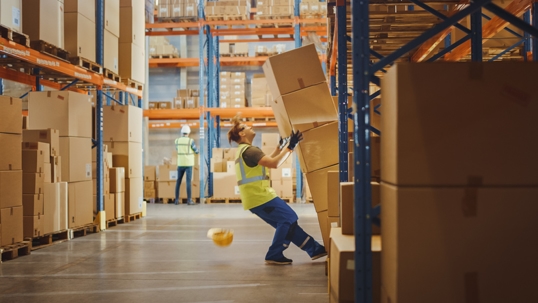Understanding Slip and Fall Accidents
Slip and fall accidents can happen in a flash, but their impact can last much longer. Have you recently been injured due to unsafe conditions on someone else’s property? Or maybe you own a property and want to better understand your responsibilities. Either way, knowing the ins and outs of slip and fall accidents is essential, especially in a bustling state like New York.
What Are Slip and Fall Cases About?
Slip and fall cases fall under premises liability law, which holds property owners responsible for keeping their spaces safe. Hazards like wet floors, icy sidewalks, poor lighting, or unsteady surfaces can quickly turn an everyday moment into a painful accident.
The law puts the responsibility on property owners to fix dangerous conditions or, at the very least, warn people about them. For an injured person to file a successful claim, they need to prove that the owner knew—or should have known—about the hazard and failed to address it.
Why Are These Cases So Common in New York?
With its busy streets, subway stations, and crowded buildings, New York offers plenty of opportunities for accidents to happen. Slips and falls are actually one of the most common causes of emergency room visits in the state.
Conditions like icy sidewalks in winter or poorly maintained floors in stores see accidents happen often. And injuries from these falls can range from minor bruises to serious fractures, head injuries, or even long-term damage. That’s why it’s so important for property owners to be on top of maintenance and for victims to understand their rights.
Proving Negligence in Slip and Fall Cases
The Responsibility of Property Owners
Property owners have a legal duty to make their premises safe for visitors, whether it’s a grocery store, an apartment building, or even a public sidewalk. This means regularly checking for hazards, cleaning up spills, fixing broken stairs, and placing warning signs when needed. Failing to take these steps can be considered negligence.
If you slipped and fell, asking questions like, "Did the property owner know about the hazard and ignore it?" or "Were they doing regular inspections?" can help determine whether they breached their duty of care.
Linking Negligence to Your Injury
To have a strong case, you must show that the hazard directly caused your injury. It’s not enough to say the floor was wet; you need to prove that the wet floor led to your fall and injury. Documenting the scene, your injuries, and any other details can make all the difference.
Courts in New York also look at whether the danger was “foreseeable.” In other words, should the property owner have known the condition was risky? For example, leaving ice untreated on a public sidewalk in January is something most people would recognize as dangerous.
What Can You Claim?
Victims of slip and fall accidents can claim damages for medical bills, lost wages, pain and suffering, and even future earnings if the injury has long-lasting effects. However, New York’s comparative negligence rule means compensation can be reduced if you’re found partly responsible for your fall—for example, if you weren’t paying attention to where you were walking.
Building a Strong Case
Gathering Evidence
Right after a slip and fall accident, it’s important to collect as much evidence as possible. Take photos of the hazard from multiple angles, record your injuries, and get witness contact information.
Filing an accident report with the property owner or manager is also critical. This creates an official record of the incident, which can support your case later.
The Role of Medical Records
Even if your injuries don’t seem severe at first, always see a doctor. Some injuries, like concussions or soft-tissue damage, don’t show symptoms right away. Medical records are not only important for your health but also serve as key evidence if you pursue a claim.
Expert Insights and Surveillance Footage
If available, security camera footage can provide clear proof of how the accident happened. Maintenance records from the property owner can also reveal whether they were doing enough to prevent incidents.
Experts, such as accident reconstruction specialists or medical professionals, can be brought in to add credibility to your case. Their insights can clarify technical details like building code violations or the extent of your injuries.
Taking Legal Action
Why Hire an Attorney?
Navigating the legal system alone after a slip and fall can feel overwhelming. A skilled personal injury attorney understands the unique challenges of New York law and can guide you through the complex process of proving negligence.
From filing necessary paperwork to negotiating with insurance companies, having an experienced lawyer on your side increases your chances of receiving fair compensation. They’ll also help you meet deadlines, like the three-year statute of limitations for filing a personal injury claim in New York.
Negotiating a Settlement
Most slip and fall cases are resolved through settlements, which save time and stress compared to going to court. Your attorney can negotiate with the property owner’s insurance company to ensure the settlement covers not just your medical bills but also your lost wages, pain, and suffering.
Call for Expert Help
A slip-and-fall accident can disrupt your life, but you don’t have to face the aftermath alone. At IX Legal, based in New York, we specialize in personal injury law and are committed to fighting for the compensation you deserve.
Whether you’re dealing with medical bills, lost work, or just need clarity on your rights, our team is here to help you every step of the way. Don’t wait to get the support and expertise you deserve.
Call us today at (646) 760-3456 to schedule your consultation.

